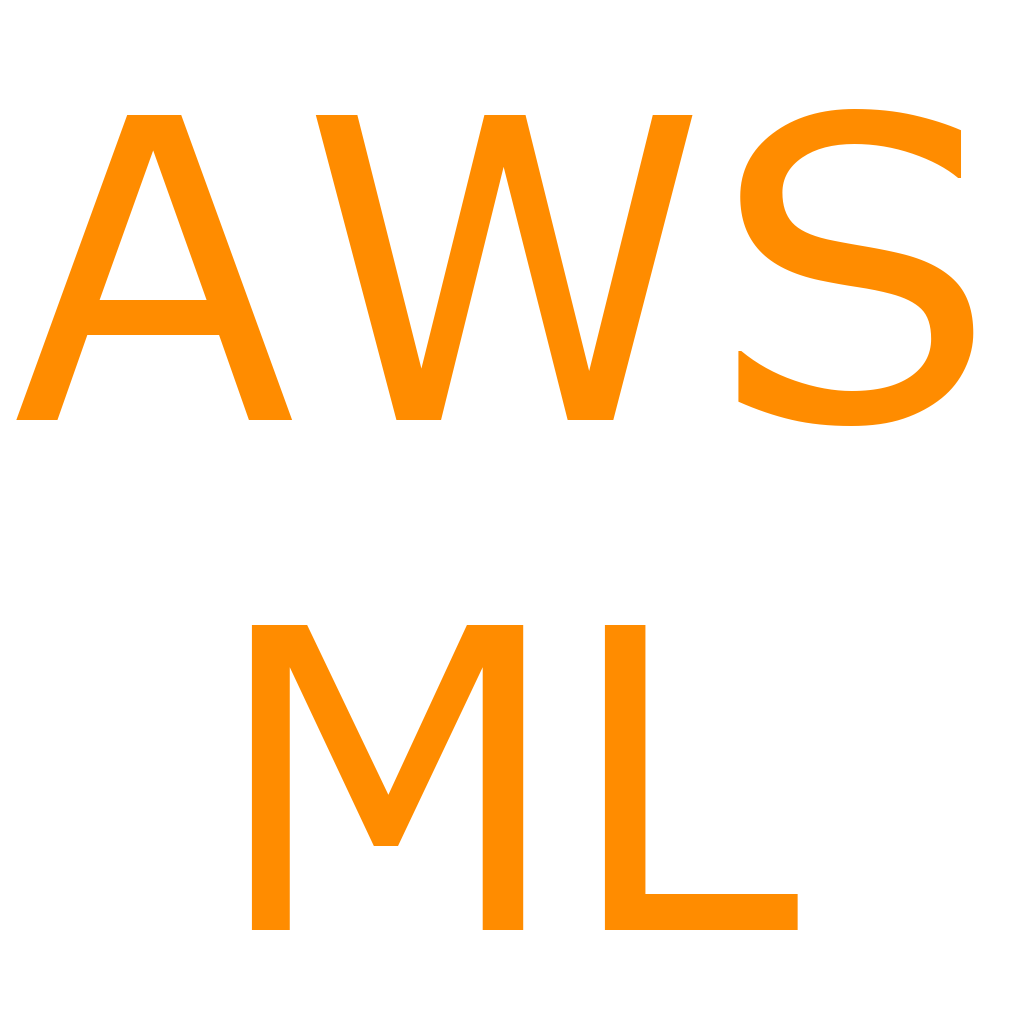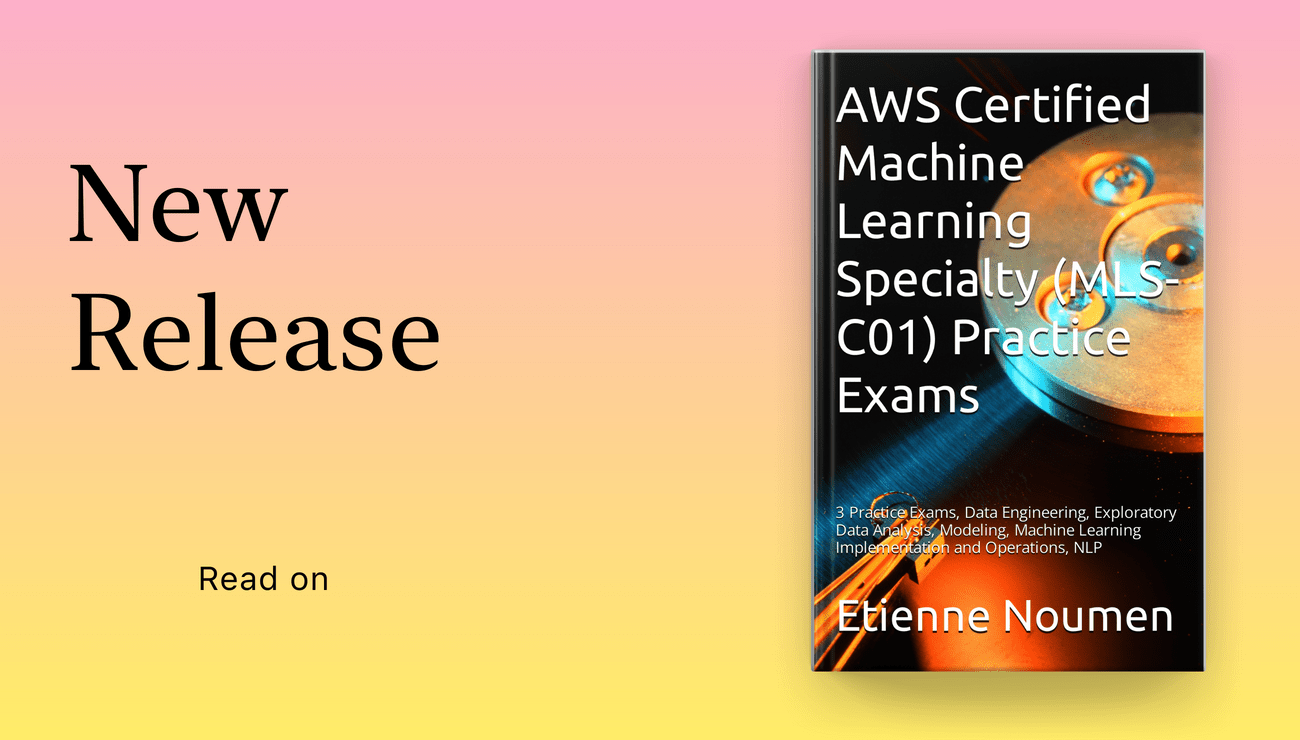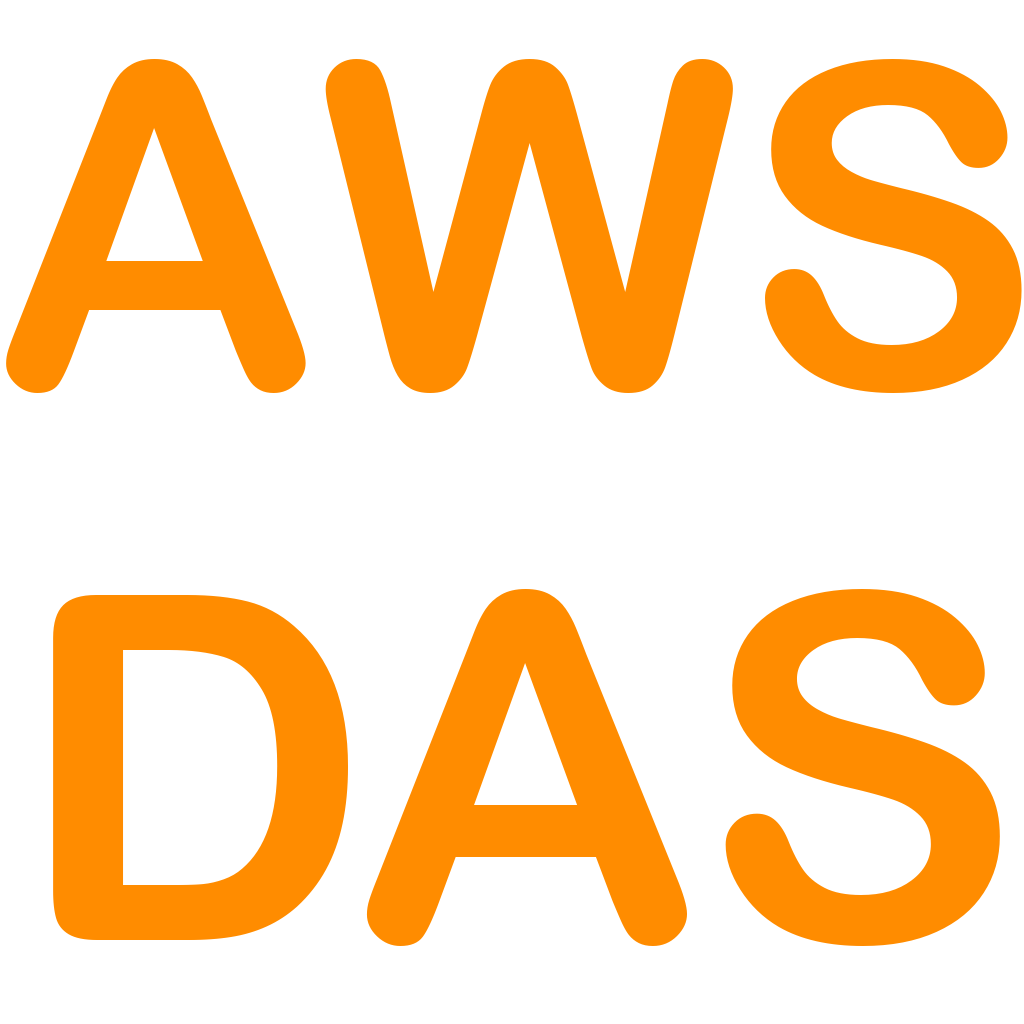You can translate the content of this page by selecting a language in the select box.
The AWS Certified Machine Learning Specialty validates expertise in building, training, tuning, and deploying machine learning (ML) models on AWS.
Use this App to learn about Machine Learning on AWS and prepare for the AWS Machine Learning Specialty Certification MLS-C01.
Download AWS machine Learning Specialty Exam Prep App on iOs
Download AWS Machine Learning Specialty Exam Prep App on Android/Web/Amazon
[appbox appstore 1611045854-iphone screenshots]
[appbox microsoftstore 9n8rl80hvm4t-mobile screenshots]
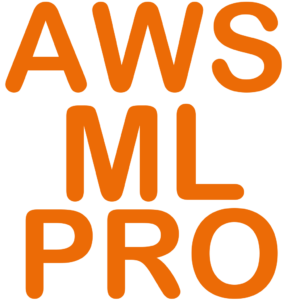
Download AWS machine Learning Specialty Exam Prep App on iOs
Download AWS Machine Learning Specialty Exam Prep App on Android/Web/Amazon
The App provides hundreds of quizzes and practice exam about:
– Machine Learning Operation on AWS
– Modelling
– Data Engineering
– Computer Vision,
– Exploratory Data Analysis,
– ML implementation & Operations
– Machine Learning Basics Questions and Answers
– Machine Learning Advanced Questions and Answers
– Scorecard
– Countdown timer
– Machine Learning Cheat Sheets
– Machine Learning Interview Questions and Answers
– Machine Learning Latest News
The App covers Machine Learning Basics and Advanced topics including: NLP, Computer Vision, Python, linear regression, logistic regression, Sampling, dataset, statistical interaction, selection bias, non-Gaussian distribution, bias-variance trade-off, Normal Distribution, correlation and covariance, Point Estimates and Confidence Interval, A/B Testing, p-value, statistical power of sensitivity, over-fitting and under-fitting, regularization, Law of Large Numbers, Confounding Variables, Survivorship Bias, univariate, bivariate and multivariate, Resampling, ROC curve, TF/IDF vectorization, Cluster Sampling, etc.
Domain 1: Data Engineering
Create data repositories for machine learning.
Identify data sources (e.g., content and location, primary sources such as user data)
Determine storage mediums (e.g., DB, Data Lake, S3, EFS, EBS)
Identify and implement a data ingestion solution.
Data job styles/types (batch load, streaming)
Data ingestion pipelines (Batch-based ML workloads and streaming-based ML workloads), etc.
Domain 2: Exploratory Data Analysis
Sanitize and prepare data for modeling.
Perform feature engineering.
Analyze and visualize data for machine learning.
Domain 3: Modeling
Frame business problems as machine learning problems.
Select the appropriate model(s) for a given machine learning problem.
Train machine learning models.
Perform hyperparameter optimization.
Evaluate machine learning models.
Domain 4: Machine Learning Implementation and Operations
Build machine learning solutions for performance, availability, scalability, resiliency, and fault
tolerance.
Recommend and implement the appropriate machine learning services and features for a given
problem.
Apply basic AWS security practices to machine learning solutions.
Deploy and operationalize machine learning solutions.
Machine Learning Services covered:
Amazon Comprehend
AWS Deep Learning AMIs (DLAMI)
AWS DeepLens
Amazon Forecast
Amazon Fraud Detector
Amazon Lex
Amazon Polly
Amazon Rekognition
Amazon SageMaker
Amazon Textract
Amazon Transcribe
Amazon Translate
Other Services and topics covered are:
Ingestion/Collection
Processing/ETL
Data analysis/visualization
Model training
Model deployment/inference
Operational
AWS ML application services
Language relevant to ML (for example, Python, Java, Scala, R, SQL)
Notebooks and integrated development environments (IDEs),
S3, SageMaker, Kinesis, Lake Formation, Athena, Kibana, Redshift, Textract, EMR, Glue, SageMaker, CSV, JSON, IMG, parquet or databases, Amazon Athena
Amazon EC2, Amazon Elastic Container Registry (Amazon ECR), Amazon Elastic Container Service, Amazon Elastic Kubernetes Service , Amazon Redshift
Important: To succeed with the real exam, do not memorize the answers in this app. It is very important that you understand why a question is right or wrong and the concepts behind it by carefully reading the reference documents in the answers.
Note and disclaimer: We are not affiliated with Microsoft or Azure or Google or Amazon. The questions are put together based on the certification study guide and materials available online. The questions in this app should help you pass the exam but it is not guaranteed. We are not responsible for any exam you did not pass.
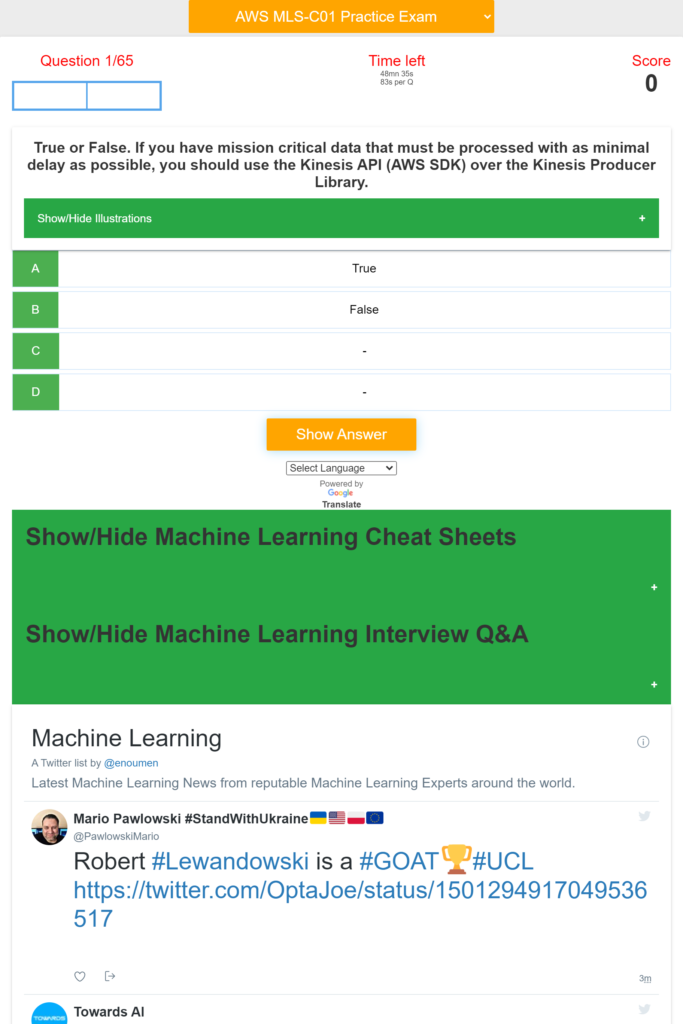
Download AWS machine Learning Specialty Exam Prep App on iOs
Download AWS Machine Learning Specialty Exam Prep App on Android/Web/Amazon
- [R] Backpropagation through space, time, and the brainby /u/SeawaterFlows (Machine Learning) on April 20, 2024 at 3:02 am
Paper: https://arxiv.org/abs/2403.16933 Abstract: Effective learning in neuronal networks requires the adaptation of individual synapses given their relative contribution to solving a task. However, physical neuronal systems -- whether biological or artificial -- are constrained by spatio-temporal locality. How such networks can perform efficient credit assignment, remains, to a large extent, an open question. In Machine Learning, the answer is almost universally given by the error backpropagation algorithm, through both space (BP) and time (BPTT). However, BP(TT) is well-known to rely on biologically implausible assumptions, in particular with respect to spatiotemporal (non-)locality, while forward-propagation models such as real-time recurrent learning (RTRL) suffer from prohibitive memory constraints. We introduce Generalized Latent Equilibrium (GLE), a computational framework for fully local spatio-temporal credit assignment in physical, dynamical networks of neurons. We start by defining an energy based on neuron-local mismatches, from which we derive both neuronal dynamics via stationarity and parameter dynamics via gradient descent. The resulting dynamics can be interpreted as a real-time, biologically plausible approximation of BPTT in deep cortical networks with continuous-time neuronal dynamics and continuously active, local synaptic plasticity. In particular, GLE exploits the ability of biological neurons to phase-shift their output rate with respect to their membrane potential, which is essential in both directions of information propagation. For the forward computation, it enables the mapping of time-continuous inputs to neuronal space, performing an effective spatiotemporal convolution. For the backward computation, it permits the temporal inversion of feedback signals, which consequently approximate the adjoint states necessary for useful parameter updates. submitted by /u/SeawaterFlows [link] [comments]
- [D] How can I become a machine learning engineer?by /u/Nwaiy (Machine Learning) on April 20, 2024 at 2:41 am
I'm a 20-year-old Brazilian student who has always admired the field of machine learning engineering. I'm more interested in the field of computer vision, but the more I research, the more lost I become with so much content that comes my way. So I decided to go to dear reddit and ask you... can you give me tips, roadmaps, or anything that will help me start my journey? submitted by /u/Nwaiy [link] [comments]
- [N] Kaiming He's lecture on DL architecture for Representation Learningby /u/lkhphuc (Machine Learning) on April 20, 2024 at 12:57 am
https://youtu.be/D_jt-xO_RmI Extremely good lecture, highest signal to noise of historical architecture advances of DL. submitted by /u/lkhphuc [link] [comments]
- Introducing automatic training for solutions in Amazon Personalizeby Ba'Carri Johnson (AWS Machine Learning Blog) on April 20, 2024 at 12:38 am
Amazon Personalize is excited to announce automatic training for solutions. Solution training is fundamental to maintain the effectiveness of a model and make sure recommendations align with users’ evolving behaviors and preferences. As data patterns and trends change over time, retraining the solution with the latest relevant data enables the model to learn and adapt,
- Do you think Reinforcement Learning still got it? [D]by /u/cyb0rg14_ (Machine Learning) on April 19, 2024 at 8:40 pm
Recently I've heard many people saying reinforcement learning itself hasn't shown any improvement in many years (maybe alphago was the last big thing). Whereas other field of AI has seen many SOTA architectures like 'Transformers' for Sequence based tasks and 'ResNet', 'Diffusers' & 'VAE' like architectures for Computer vision tasks. Thought I do believe, directly or indirectly, reinforcement learning still playing a crucial role behind LLMs like ChatGPT and Claude using 'RLHF' techniques. And in many other recent technologies including self driving cars and robots. I think this is just a cold winter going in this field, which will soon find a state of the art architecture in upcoming years (or this is what I hope) What's your thoughts? 🤔 submitted by /u/cyb0rg14_ [link] [comments]
- [P] TorchFix - a linter for PyTorch-using code with autofix supportby /u/kit1980 (Machine Learning) on April 19, 2024 at 6:13 pm
TorchFix is a Python code static analysis tool - a linter with autofix capabilities - for users of PyTorch. It can be used to find and fix issues like usage of deprecated PyTorch functions and non-public symbols, and to adopt PyTorch best practices in general: https://github.com/pytorch-labs/torchfix submitted by /u/kit1980 [link] [comments]
- [D] Is Google Set to Dominate the RAG Scene with Its Massive Data Resources?by /u/Few-Pomegranate4369 (Machine Learning) on April 19, 2024 at 5:06 pm
Hey everyone! It looks like in a few years, the basic large language models (LLMs) we use will get commoditised, and it won't really matter which one you pick. The next big thing could be LLMs that use Retrieval-Augmented Generation (RAG), which means they need a ton of data to work well. Given that Google has access to loads of data through its search engine, do you think they're in a better position to lead in this new phase compared to other companies? What do you all think? submitted by /u/Few-Pomegranate4369 [link] [comments]
- Use Kubernetes Operators for new inference capabilities in Amazon SageMaker that reduce LLM deployment costs by 50% on averageby Rajesh Ramchander (AWS Machine Learning Blog) on April 19, 2024 at 4:55 pm
We are excited to announce a new version of the Amazon SageMaker Operators for Kubernetes using the AWS Controllers for Kubernetes (ACK). ACK is a framework for building Kubernetes custom controllers, where each controller communicates with an AWS service API. These controllers allow Kubernetes users to provision AWS resources like buckets, databases, or message queues
- Talk to your slide deck using multimodal foundation models hosted on Amazon Bedrock – Part 2by Archana Inapudi (AWS Machine Learning Blog) on April 19, 2024 at 3:15 pm
In Part 1 of this series, we presented a solution that used the Amazon Titan Multimodal Embeddings model to convert individual slides from a slide deck into embeddings. We stored the embeddings in a vector database and then used the Large Language-and-Vision Assistant (LLaVA 1.5-7b) model to generate text responses to user questions based on
- Scale AI training and inference for drug discovery through Amazon EKS and Karpenterby Matthew Welborn (AWS Machine Learning Blog) on April 19, 2024 at 3:07 pm
This is a guest post co-written with the leadership team of Iambic Therapeutics. Iambic Therapeutics is a drug discovery startup with a mission to create innovative AI-driven technologies to bring better medicines to cancer patients, faster. Our advanced generative and predictive artificial intelligence (AI) tools enable us to search the vast space of possible drug
- [P] AI-based Language Teacher that can run locally on a 12GB graphics card (RTX 4070)by /u/HichamEB (Machine Learning) on April 19, 2024 at 2:43 pm
I've been playing around with various open-source models lately. One fun application that I figured I could try was a <Language Teacher> 🌍 The result are not half bad, you can give it a try here: https://github.com/helboukkouri/virtual-teacher submitted by /u/HichamEB [link] [comments]
- [P] End-to-end locally-running language teacherby /u/HichamEB (Machine Learning) on April 19, 2024 at 1:44 pm
Hey! Given how easy it is to just grab an open-source model and run it locally these days, I figured I'd try to make some kind of Language Teacher with whom I'd casually have discussions and learn new phrases on the go. This is a quick test in English/Spanish: https://www.loom.com/share/f0dbed21254f445b9d5b0a8e11270982 I used an LLM for the underlying chatbot, a TTS model for speaking out the answers and an ASR model for transforming my speech into an input for the LLM. Let me know if you have any comments 🙂 submitted by /u/HichamEB [link] [comments]
- [D] Embeddings search "drowning" in a sea of noise! Can you solve this riddle?by /u/grudev (Machine Learning) on April 19, 2024 at 1:21 pm
I'm writing a proof of concept for a RAG application for hundreds of thousands of textual records stored in a Postgres DB, using pgvector to store embeddings ( and using an HNSW index). Vector dimensions are specified correctly. Currently running experiments using varied chunk sizes for the text and comparing two different embedding models. (actual chunk size can vary a little because I am not breaking words to force a size). nomic-embed-text snowflake-arctic-embed-m-long Here's the gist experiment: 1- Create embeddings for "n" documents 2- Create a list of queries/prompts for information that is assuredly contained in SOME of those documents. Examples: What were the events that happened at "location x"? What is the John Doe's nickname? Who were the patients that checked into "hospital name"? Tell me about a requisition made by the director of sales. ... 3- For each query/prompt, I run a cosine distance query and get the the nearest 5 matching chunks. 4- After calculating the average distance for all queries/chunks, the lowest value is, in theory, the best combination of model/chunk_size. This worked SUPER well with a small sample of documents (say ≃ 200), but once I added more documents I started noticing an issue. Some of the NEW documents contain lists of literally 30k+ names. Whenever I ran a query that contains names, chunks from the lists above are returned, EVEN IF THEY DON'T CONTAIN THE NAMES, or any of the other information presented in the prompt (this happens regardless of the chose chunk size or strategy). My theory is that when a chunk containing names is embedded, the resulting embedding contain a strong vector for the semantic meaning of "name", but the vectors that differentiate that name from others can be relatively weak. A chunk containing almost nothing but references to the vector for "name" is then considered very similar to the prompt's embeddings, despite the names themselves not matching. For those of you with more experience/understanding, am I wrong in these assumptions? Would you have any suggestions/workarounds? I have some ideas but would like to see if anyone faced the same issues. submitted by /u/grudev [link] [comments]
- [R] The roles of value, key, and query in the diffusion model.by /u/Candid_Finish444 (Machine Learning) on April 19, 2024 at 1:10 pm
I am trying to replace the key, query, and value in different prompts of the diffusion model for video editing. I want to understand why key, query, and value are effective and what they represent in the diffusion model. https://preview.redd.it/uoce1dh4rfvc1.png?width=1086&format=png&auto=webp&s=24d6504ca9c50d9f5924dd935204db6c15484a16 submitted by /u/Candid_Finish444 [link] [comments]
- [P] How to obtain the mean and std from the rms to obtain the first prediction time for a time series case study ?by /u/Papytho (Machine Learning) on April 19, 2024 at 8:59 am
Hello I am trying to implement this from a paper: First, select the first l sampling points in the sampling points of bearing faults and calculate the mean μ_rms and standard deviation σ_rms of their root mean square values, and establish a 3σ criterion- based judgment interval [μ_rms − 3σ_rms, μ_rms +3σ_rms] accordingly. 2) Second, calculate the RMS index for the l + 1 th point FPTl+1 and compare it with the decision interval in step 1. If its value is not in this range, then recalculate the judgment interval after making l =l + 1. If its value is within this range, a judgment is triggered once. 3) Finally, in order to avoid false triggers, three consecutive triggers are used as the identification basis for the final FPT, and make this time FPTl = FPT The paper title: Physics guided neural network: Remaining useful life prediction of rolling bearings using long short-term memory network through dynamic weighting of degradation process My question is: how do I get the μ_rms and σ_rms from the RMS? What I did in this case was first sample the data and then calculate the RMS on the samples. But then I recreate sequences from these RMS values (which doesn't seem logical to me) and then calculate the μ_rms and σ_rms. I do use this value I obtain to do the interval and compare it with the RMS value. But the problem is that by doing this, it triggers way too early. This is the code I have made: def find_fpt(rms_sample, sample): fpt_index = 0 trigger = 0 for i in range(len(rms_sample)): upper = np.mean(rms_sample[i] + 3 * np.std(rms_sample[i])) lower = np.mean(rms_sample[i] - 3 * np.std(rms_sample[i])) rms = np.mean(np.square(sample[i + 1]) ** 2) if upper > rms > lower: if trigger == 3: fpt_index = i break trigger += 1 else: trigger = 0 print(trigger) return fpt_index def sliding_window(data, window_size): return np.lib.stride_tricks.sliding_window_view(data, window_size) window_size = 20 list_bearing, list_rul = load_dataset_and_rul() sampling = sliding_window(list_bearing[0][::100], window_size) rms_values = np.sqrt(np.mean(np.square(sampling) ** 2, axis=1)) rms_sample = sliding_window(rms_values, window_size) fpt = find_fpt(rms_sample,sampling) submitted by /u/Papytho [link] [comments]
- Any ways to improve TabNet..??? [D]by /u/Shoddy_Battle_5397 (Machine Learning) on April 19, 2024 at 8:06 am
so i was experimenting with tabnet architecture by google https://arxiv.org/pdf/1908.07442.pdf and found that if the data has a lot of randomness and noice then only it can outperform based on my dataset, but traditional machine learning algo like xgboost, random forest do a better job at those dataset where the features are robust enough but they fail the zero shot test and the transformer show some accuracy in that, so i just wanted to check if its possible to merge both of the traditional techniques and the transformer architecture so that it can perform better at traditional ml algo datasets and also give a good zero shot accuracy. while trying to merge it i found that in the tabnet paper they assume that each feature is independent and do not provide any place for any relationship with the features itself but the Tabtransformer architecture takes it into account https://arxiv.org/pdf/2012.06678.pdf as well but doesnt have any feature selection as proposed in tabnet.... i tried to merge them but was stuck where i have to do feature selection on the basis of the dimension assigned to each feature, while this work i s done by sparsemax in the tabnet paper i cant find a way to do that... any help would be appreciated submitted by /u/Shoddy_Battle_5397 [link] [comments]
- [R] Machine learning from 3D meshes and physical fieldsby /u/SatieGonzales (Machine Learning) on April 19, 2024 at 7:38 am
Ansys has released an AutoML product for physical simulation called Ansys Sim AI (https://www.ansys.com/fr-fr/news-center/press-releases/1-9-24-ansys-launches-simai). As a machine learning engineer, I wonder what types of models can be used to train on 3D mesh data in STL format with physical fields. How can the varying dimensions of input and output data be managed for different geometric objects? Does anyone have any ideas on this topic? submitted by /u/SatieGonzales [link] [comments]
- [D] Auto Scriptingby /u/starcrashing (Machine Learning) on April 19, 2024 at 7:33 am
I have been working on a project for the past couple of months, and I wanted to know if anyone had feedback or thoughts to fuel its completion. I built a lexer and parser using python and C tokens to create a language that reads a python script or file and utilizes hooks to amend or write new lines. It will be able to take even a blank Python file to write, test, and deliver a working program based on a single prompt provided initially by the user. The way it works is it uses GPTs API to call automated prompts that are built into the program. It creates a program by itself by only using 1 initial prompt by the user on the program. It is a python program with the language I named autoscripter built into it. I hope to finish it by the end of the year if not into next year. This is a very challenging project, but I believe it is the future of scripting, and I have no doubts Microsoft will release something on this sooner than later. Any thoughts? I created this first by designing a debugger that error corrected python code and realized that not only error correction could be automated, but also the entire scripting process could be left to a lot of automation. submitted by /u/starcrashing [link] [comments]
- [Project] AI powered products in storesby /u/Complete-Holiday-610 (Machine Learning) on April 19, 2024 at 6:42 am
I am working on a project regarding marketing of AI powered products in Retail stores. I am trying to find some products that market ‘AI’ as the forefront feature, eg Samsung’s BeSpoke AI series, Bmw’s AI automated driving etc. Need them to be physical products so I can go to stores and do research and survey. Any kind of help is appreciated. submitted by /u/Complete-Holiday-610 [link] [comments]
- [Discussion] Are there specific technical/scientific breakthroughs that have allowed the significant jump in maximum context length across multiple large language models recently?by /u/analyticalmonk (Machine Learning) on April 19, 2024 at 6:28 am
Latest releases of models such as GPT-4 and Claude have a significant jump in the maximum context length (4/8k -> 128k+). The progress in terms of number of tokens that can be processed by these models sound remarkable in % terms. What has led to this? Is this something that's happened purely because of increased compute becoming available during training? Are there algorithmic advances that have led to this? submitted by /u/analyticalmonk [link] [comments]
- Probability for Machine Learning [D]by /u/AffectionateCoyote86 (Machine Learning) on April 19, 2024 at 4:47 am
I'm a recent engineering graduate who's switching roles from traditional software engineering ones to ML/AI focused ones. I've gone through an introductory probability course in my undergrad, but the recent developments such as diffusion models, or even some relatively older ones like VAEs or GANs require an advanced understanding of probability theory. I'm finding the math/concepts related to probability hard to follow when I read up on these models. Any suggestions on how to bridge the knowledge gap? submitted by /u/AffectionateCoyote86 [link] [comments]
- [D] How to evaluate RAG - both retrieval and generation, when all I have is a set of PDF documents?by /u/awinml1 (Machine Learning) on April 19, 2024 at 4:43 am
Say I have 1000 PDF docs that I use as input to a RAG Pipeline. I want to to evaluate different steps of the RAG pipeline so that I can measure: - Which embedding models work better for my data? - Which rerankers work and are they required? - Which LLMs give the most factual and coherent answers? How do I evaluate these steps of the pipeline? Based on my research, I found that most frameworks require labels for both retrieval and generation evaluation. How do I go about creating this data using a LLM? Are there any other techniques? Some things I found: For retrieval: Use a LLM to generate synthetic ranked labels for retrieval. Which LLM should I use? What best practices should I follow? Any code that I can look at for this? For Generated Text: - Generate Synthetic labels like the above for each generation. - Use a LLM as a judge to Rate each generation based on the context it got and the question asked. Which LLMs would you recommend? What techniques worked for you guys? submitted by /u/awinml1 [link] [comments]
- [Project] RL projectby /u/Valuable-Wishbone276 (Machine Learning) on April 19, 2024 at 4:36 am
Hi everyone. I want to build this idea of mine for a class project, and I wanted some input from others. I want to build an AI algorithm that can play the game Drift Hunters (https://drift-hunters.co/drift-hunters-games). I imagine I have to build some reinforcement learning program, though I'm not sure exactly how to organize state representations and input data. I also imagine that I'd need my screen to be recorded for a continuous period of time to collect data. I chose this game since it's got three very basic commands(turn left, turn right, and drive forward) and the purpose of the game(which never ends) is to maximize drift score. Any ideas are much appreciated. lmk if u still need more info. Thanks everyone. submitted by /u/Valuable-Wishbone276 [link] [comments]
- [R] Unifying Bias and Unfairness in Information Retrieval: A Survey of Challenges and Opportunities with Large Language Modelsby /u/KID_2_2 (Machine Learning) on April 19, 2024 at 4:34 am
PDF: https://arxiv.org/abs/2404.11457 GitHub: https://github.com/KID-22/LLM-IR-Bias-Fairness-Survey Abstract: With the rapid advancement of large language models (LLMs), information retrieval (IR) systems, such as search engines and recommender systems, have undergone a significant paradigm shift. This evolution, while heralding new opportunities, introduces emerging challenges, particularly in terms of biases and unfairness, which may threaten the information ecosystem. In this paper, we present a comprehensive survey of existing works on emerging and pressing bias and unfairness issues in IR systems when the integration of LLMs. We first unify bias and unfairness issues as distribution mismatch problems, providing a groundwork for categorizing various mitigation strategies through distribution alignment. Subsequently, we systematically delve into the specific bias and unfairness issues arising from three critical stages of LLMs integration into IR systems: data collection, model development, and result evaluation. In doing so, we meticulously review and analyze recent literature, focusing on the definitions, characteristics, and corresponding mitigation strategies associated with these issues. Finally, we identify and highlight some open problems and challenges for future work, aiming to inspire researchers and stakeholders in the IR field and beyond to better understand and mitigate bias and unfairness issues of IR in this LLM era. https://preview.redd.it/3glvv92v6dvc1.png?width=2331&format=png&auto=webp&s=af66f2bf082620882f09ea744eda88cf06c67112 https://preview.redd.it/d48pt3sw6dvc1.png?width=1126&format=png&auto=webp&s=2343460399473bde3f5e37c0bbcfdc88ffc81efb submitted by /u/KID_2_2 [link] [comments]
- [D] Has anyone tried distilling large language models the old way?by /u/miladink (Machine Learning) on April 19, 2024 at 12:11 am
So, nowadays, everyone is distilling rationales gathered from a large language model to another relatively smaller model. However, I remember from the old days that we did we train the small network to match the logits of the large network when doing distillation. Is this forgotten /tried and did not work today? submitted by /u/miladink [link] [comments]
- [D] Llama-3 (7B and 70B) on a medical domain benchmarkby /u/aadityaura (Machine Learning) on April 18, 2024 at 6:45 pm
Llama-3 is making waves in the AI community. I was curious how it will perform in the medical domain, Here are the evaluation results for Llama-3 (7B and 70B) on a medical domain benchmark consisting of 9 diverse datasets https://preview.redd.it/sdwx5tglxbvc1.png?width=1464&format=png&auto=webp&s=d32585a69244d44c83e2b1e8a85301a7a8676ea2 I'll be fine-tuning, evaluating & releasing Llama-3 & different LLMs over the next few days on different Medical and Legal benchmarks. Follow the updates here: https://twitter.com/aadityaura https://preview.redd.it/9egbcayv9avc1.png?width=1344&format=png&auto=webp&s=436a972421d5568e1a544962b8cfd1c7b14efe04 submitted by /u/aadityaura [link] [comments]
- Generate customized, compliant application IaC scripts for AWS Landing Zone using Amazon Bedrockby Ebbey Thomas (AWS Machine Learning Blog) on April 18, 2024 at 5:57 pm
As you navigate the complexities of cloud migration, the need for a structured, secure, and compliant environment is paramount. AWS Landing Zone addresses this need by offering a standardized approach to deploying AWS resources. This makes sure your cloud foundation is built according to AWS best practices from the start. With AWS Landing Zone, you eliminate the guesswork in security configurations, resource provisioning, and account management. It’s particularly beneficial for organizations looking to scale without compromising on governance or control, providing a clear path to a robust and efficient cloud setup. In this post, we show you how to generate customized, compliant IaC scripts for AWS Landing Zone using Amazon Bedrock.
- Live Meeting Assistant with Amazon Transcribe, Amazon Bedrock, and Knowledge Bases for Amazon Bedrockby Bob Strahan (AWS Machine Learning Blog) on April 18, 2024 at 5:08 pm
You’ve likely experienced the challenge of taking notes during a meeting while trying to pay attention to the conversation. You’ve probably also experienced the need to quickly fact-check something that’s been said, or look up information to answer a question that’s just been asked in the call. Or maybe you have a team member that always joins meetings late, and expects you to send them a quick summary over chat to catch them up. Then there are the times that others are talking in a language that’s not your first language, and you’d love to have a live translation of what people are saying to make sure you understand correctly. And after the call is over, you usually want to capture a summary for your records, or to send to the participants, with a list of all the action items, owners, and due dates. All of this, and more, is now possible with our newest sample solution, Live Meeting Assistant (LMA).
- [R] InternVL v1.5 open sourced, ranking first in OpenCompass multi-modal benchmarkby /u/flyforlight (Machine Learning) on April 18, 2024 at 4:42 pm
https://preview.redd.it/fh44g3n4m9vc1.png?width=1383&format=png&auto=webp&s=9b3e499bd51aeb10559f4636eba2a1677d4a08a3 InternVL is a multi-modal foundation model, which is accepted as an Oral paper for CVPR 2024. The latest version InternVL v1.5 ranks first in the OpenCompass multi-modal model benchmark. Demo: https://internvl.opengvlab.com/ Model Download: https://huggingface.co/collections/OpenGVLab/internvl-65b92d6be81c86166ca0dde4 OpenCompass: https://rank.opencompass.org.cn Some examples: https://preview.redd.it/rwj7vs9rm9vc1.jpg?width=902&format=pjpg&auto=webp&s=514e14e692db8ea7bd5a66cc36b1ca3f8351102c https://preview.redd.it/vtwjml3qm9vc1.png?width=2508&format=png&auto=webp&s=e32c044d4bc60ef28baf64dccdcb5fe9b10dfc61 https://preview.redd.it/p51vt3xpn9vc1.png?width=2609&format=png&auto=webp&s=73907e5ffb4d9b9bd4250cbce53e3bd29dedabf1 submitted by /u/flyforlight [link] [comments]
- Meta Llama 3 models are now available in Amazon SageMaker JumpStartby Kyle Ulrich (AWS Machine Learning Blog) on April 18, 2024 at 4:31 pm
Today, we are excited to announce that Meta Llama 3 foundation models are available through Amazon SageMaker JumpStart to deploy and run inference. The Llama 3 models are a collection of pre-trained and fine-tuned generative text models. In this post, we walk through how to discover and deploy Llama 3 models via SageMaker JumpStart. What is
- [N] Meta releases Llama 3by /u/we_are_mammals (Machine Learning) on April 18, 2024 at 4:18 pm
https://llama.meta.com/llama3/ https://preview.redd.it/n3lwb4xfj9vc1.png?width=3840&format=png&auto=webp&s=b756d89c50c627955668d5ac16df82f7af01cdbc submitted by /u/we_are_mammals [link] [comments]
- [R] Compression Represents Intelligence Linearlyby /u/SeawaterFlows (Machine Learning) on April 18, 2024 at 3:54 pm
Paper: https://arxiv.org/abs/2404.09937 Code: https://github.com/hkust-nlp/llm-compression-intelligence Datasets: https://huggingface.co/datasets/hkust-nlp/llm-compression Abstract: There is a belief that learning to compress well will lead to intelligence. Recently, language modeling has been shown to be equivalent to compression, which offers a compelling rationale for the success of large language models (LLMs): the development of more advanced language models is essentially enhancing compression which facilitates intelligence. Despite such appealing discussions, little empirical evidence is present for the interplay between compression and intelligence. In this work, we examine their relationship in the context of LLMs, treating LLMs as data compressors. Given the abstract concept of "intelligence", we adopt the average downstream benchmark scores as a surrogate, specifically targeting intelligence related to knowledge and commonsense, coding, and mathematical reasoning. Across 12 benchmarks, our study brings together 30 public LLMs that originate from diverse organizations. Remarkably, we find that LLMs' intelligence -- reflected by average benchmark scores -- almost linearly correlates with their ability to compress external text corpora. These results provide concrete evidence supporting the belief that superior compression indicates greater intelligence. Furthermore, our findings suggest that compression efficiency, as an unsupervised metric derived from raw text corpora, serves as a reliable evaluation measure that is linearly associated with the model capabilities. We open-source our compression datasets as well as our data collection pipelines to facilitate future researchers to assess compression properly. submitted by /u/SeawaterFlows [link] [comments]
- [D] Product evaluations is one of the most under-discussed topicsby /u/BootstrapGuy (Machine Learning) on April 18, 2024 at 3:10 pm
We are an AI consultancy and this happens with us over and over again... We start a new LLM project with a client. Their engineers get to 80% super quickly. They have a lot of edge cases and want us to finish up the remaining 20%. We ask them about evals. And of course they don't have them. We create the eval framework, improve the pipeline iteratively, and voila. Job done, everybody is happy. I seriously think that based on what we see the best AI product teams are going to be the ones that spend an absurd amount of time on evals. It's boring, it's repetitive but it makes the difference between an amazing AI product and an underperforming one. submitted by /u/BootstrapGuy [link] [comments]
- Slack delivers native and secure generative AI powered by Amazon SageMaker JumpStartby Jackie Rocca (AWS Machine Learning Blog) on April 18, 2024 at 12:00 pm
We are excited to announce that Slack, a Salesforce company, has collaborated with Amazon SageMaker JumpStart to power Slack AI’s initial search and summarization features and provide safeguards for Slack to use large language models (LLMs) more securely. Slack worked with SageMaker JumpStart to host industry-leading third-party LLMs so that data is not shared with the infrastructure owned by third party model providers. This keeps customer data in Slack at all times and upholds the same security practices and compliance standards that customers expect from Slack itself.
- Uncover hidden connections in unstructured financial data with Amazon Bedrock and Amazon Neptuneby Xan Huang (AWS Machine Learning Blog) on April 17, 2024 at 3:00 pm
In asset management, portfolio managers need to closely monitor companies in their investment universe to identify risks and opportunities, and guide investment decisions. Tracking direct events like earnings reports or credit downgrades is straightforward—you can set up alerts to notify managers of news containing company names. However, detecting second and third-order impacts arising from events
- Open source observability for AWS Inferentia nodes within Amazon EKS clustersby Riccardo Freschi (AWS Machine Learning Blog) on April 17, 2024 at 2:54 pm
This post walks you through the Open Source Observability pattern for AWS Inferentia, which shows you how to monitor the performance of ML chips, used in an Amazon Elastic Kubernetes Service (Amazon EKS) cluster, with data plane nodes based on Amazon Elastic Compute Cloud (Amazon EC2) instances of type Inf1 and Inf2.
- Explore data with ease: Use SQL and Text-to-SQL in Amazon SageMaker Studio JupyterLab notebooksby Pranav Murthy (AWS Machine Learning Blog) on April 16, 2024 at 11:00 pm
Amazon SageMaker Studio provides a fully managed solution for data scientists to interactively build, train, and deploy machine learning (ML) models. In the process of working on their ML tasks, data scientists typically start their workflow by discovering relevant data sources and connecting to them. They then use SQL to explore, analyze, visualize, and integrate
- Distributed training and efficient scaling with the Amazon SageMaker Model Parallel and Data Parallel Librariesby Xinle Sheila Liu (AWS Machine Learning Blog) on April 16, 2024 at 4:18 pm
In this post, we explore the performance benefits of Amazon SageMaker (including SMP and SMDDP), and how you can use the library to train large models efficiently on SageMaker. We demonstrate the performance of SageMaker with benchmarks on ml.p4d.24xlarge clusters up to 128 instances, and FSDP mixed precision with bfloat16 for the Llama 2 model.
- Manage your Amazon Lex bot via AWS CloudFormation templatesby Thomas Rindfuss (AWS Machine Learning Blog) on April 16, 2024 at 4:11 pm
Amazon Lex is a fully managed artificial intelligence (AI) service with advanced natural language models to design, build, test, and deploy conversational interfaces in applications. It employs advanced deep learning technologies to understand user input, enabling developers to create chatbots, virtual assistants, and other applications that can interact with users in natural language. Managing your
- A secure approach to generative AI with AWSby Anthony Liguori (AWS Machine Learning Blog) on April 16, 2024 at 4:00 pm
Generative artificial intelligence (AI) is transforming the customer experience in industries across the globe. Customers are building generative AI applications using large language models (LLMs) and other foundation models (FMs), which enhance customer experiences, transform operations, improve employee productivity, and create new revenue channels. The biggest concern we hear from customers as they explore the advantages of generative AI is how to protect their highly sensitive data and investments. At AWS, our top priority is safeguarding the security and confidentiality of our customers' workloads. We think about security across the three layers of our generative AI stack ...
- Cost-effective document classification using the Amazon Titan Multimodal Embeddings Modelby Sumit Bhati (AWS Machine Learning Blog) on April 11, 2024 at 7:21 pm
Organizations across industries want to categorize and extract insights from high volumes of documents of different formats. Manually processing these documents to classify and extract information remains expensive, error prone, and difficult to scale. Advances in generative artificial intelligence (AI) have given rise to intelligent document processing (IDP) solutions that can automate the document classification,
- AWS at NVIDIA GTC 2024: Accelerate innovation with generative AI on AWSby Julie Tang (AWS Machine Learning Blog) on April 11, 2024 at 4:14 pm
AWS was delighted to present to and connect with over 18,000 in-person and 267,000 virtual attendees at NVIDIA GTC, a global artificial intelligence (AI) conference that took place March 2024 in San Jose, California, returning to a hybrid, in-person experience for the first time since 2019. AWS has had a long-standing collaboration with NVIDIA for
- Build an active learning pipeline for automatic annotation of images with AWS servicesby Yanxiang Yu (AWS Machine Learning Blog) on April 10, 2024 at 4:26 pm
This blog post is co-written with Caroline Chung from Veoneer. Veoneer is a global automotive electronics company and a world leader in automotive electronic safety systems. They offer best-in-class restraint control systems and have delivered over 1 billion electronic control units and crash sensors to car manufacturers globally. The company continues to build on a
- Knowledge Bases for Amazon Bedrock now supports custom prompts for the RetrieveAndGenerate API and configuration of the maximum number of retrieved resultsby Sandeep Singh (AWS Machine Learning Blog) on April 9, 2024 at 7:01 pm
With Knowledge Bases for Amazon Bedrock, you can securely connect foundation models (FMs) in Amazon Bedrock to your company data for Retrieval Augmented Generation (RAG). Access to additional data helps the model generate more relevant, context-specific, and accurate responses without retraining the FMs. In this post, we discuss two new features of Knowledge Bases for
- Knowledge Bases for Amazon Bedrock now supports metadata filtering to improve retrieval accuracyby Corvus Lee (AWS Machine Learning Blog) on April 8, 2024 at 7:23 pm
At AWS re:Invent 2023, we announced the general availability of Knowledge Bases for Amazon Bedrock. With Knowledge Bases for Amazon Bedrock, you can securely connect foundation models (FMs) in Amazon Bedrock to your company data using a fully managed Retrieval Augmented Generation (RAG) model. For RAG-based applications, the accuracy of the generated responses from FMs
- Build knowledge-powered conversational applications using LlamaIndex and Llama 2-Chatby Romina Sharifpour (AWS Machine Learning Blog) on April 8, 2024 at 5:03 pm
Unlocking accurate and insightful answers from vast amounts of text is an exciting capability enabled by large language models (LLMs). When building LLM applications, it is often necessary to connect and query external data sources to provide relevant context to the model. One popular approach is using Retrieval Augmented Generation (RAG) to create Q&A systems
- [D] Simple Questions Threadby /u/AutoModerator (Machine Learning) on April 7, 2024 at 3:00 pm
Please post your questions here instead of creating a new thread. Encourage others who create new posts for questions to post here instead! Thread will stay alive until next one so keep posting after the date in the title. Thanks to everyone for answering questions in the previous thread! submitted by /u/AutoModerator [link] [comments]
Download AWS machine Learning Specialty Exam Prep App on iOs

Download AWS Machine Learning Specialty Exam Prep App on Android/Web/Amazon
A Twitter List by enoumenDownload AWS machine Learning Specialty Exam Prep App on iOs
Download AWS Machine Learning Specialty Exam Prep App on Android/Web/Amazon


